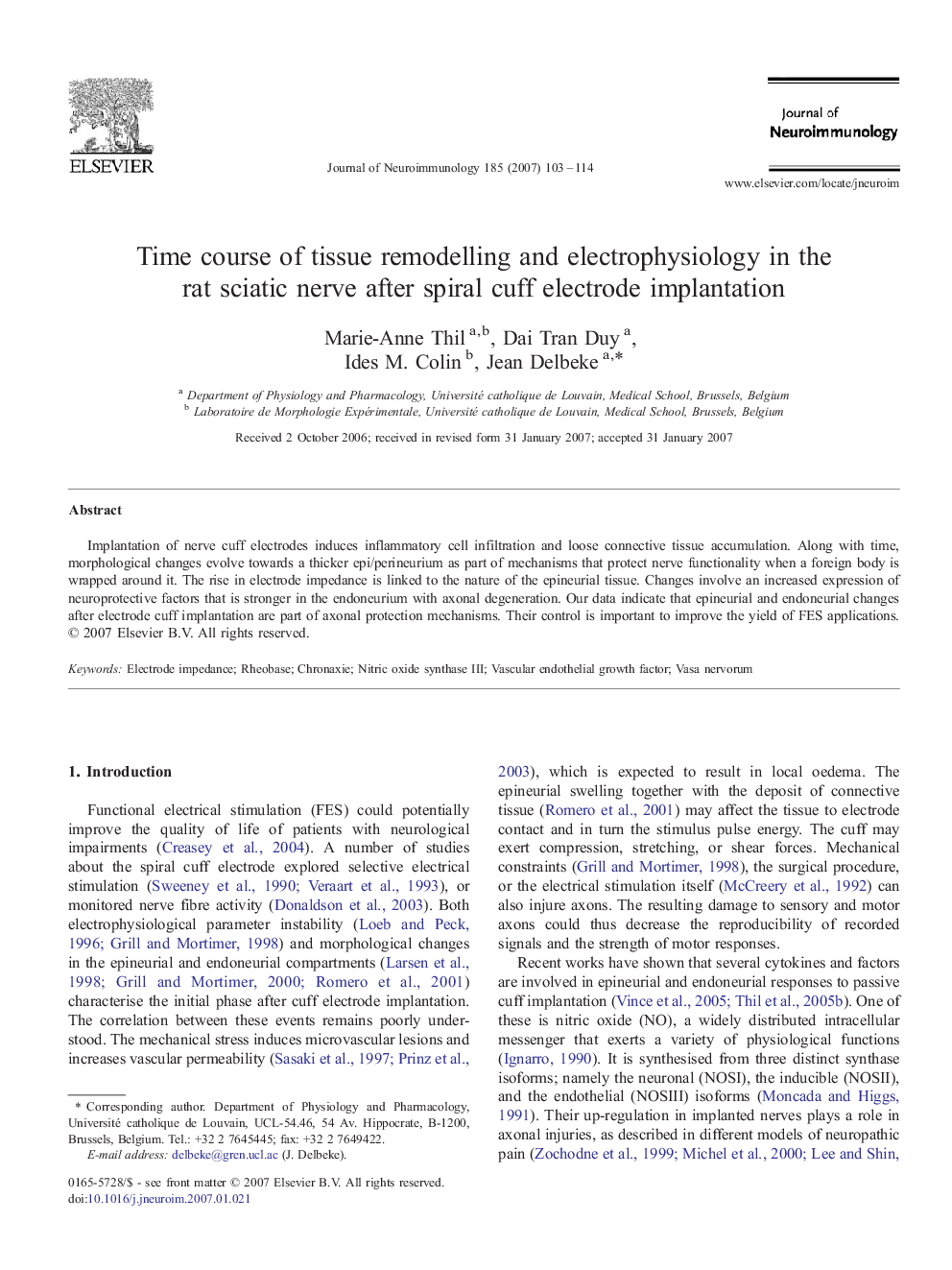| Article ID | Journal | Published Year | Pages | File Type |
|---|---|---|---|---|
| 3065582 | Journal of Neuroimmunology | 2007 | 12 Pages |
Abstract
Implantation of nerve cuff electrodes induces inflammatory cell infiltration and loose connective tissue accumulation. Along with time, morphological changes evolve towards a thicker epi/perineurium as part of mechanisms that protect nerve functionality when a foreign body is wrapped around it. The rise in electrode impedance is linked to the nature of the epineurial tissue. Changes involve an increased expression of neuroprotective factors that is stronger in the endoneurium with axonal degeneration. Our data indicate that epineurial and endoneurial changes after electrode cuff implantation are part of axonal protection mechanisms. Their control is important to improve the yield of FES applications.
Related Topics
Life Sciences
Immunology and Microbiology
Immunology
Authors
Marie-Anne Thil, Dai Tran Duy, Ides M. Colin, Jean Delbeke,
